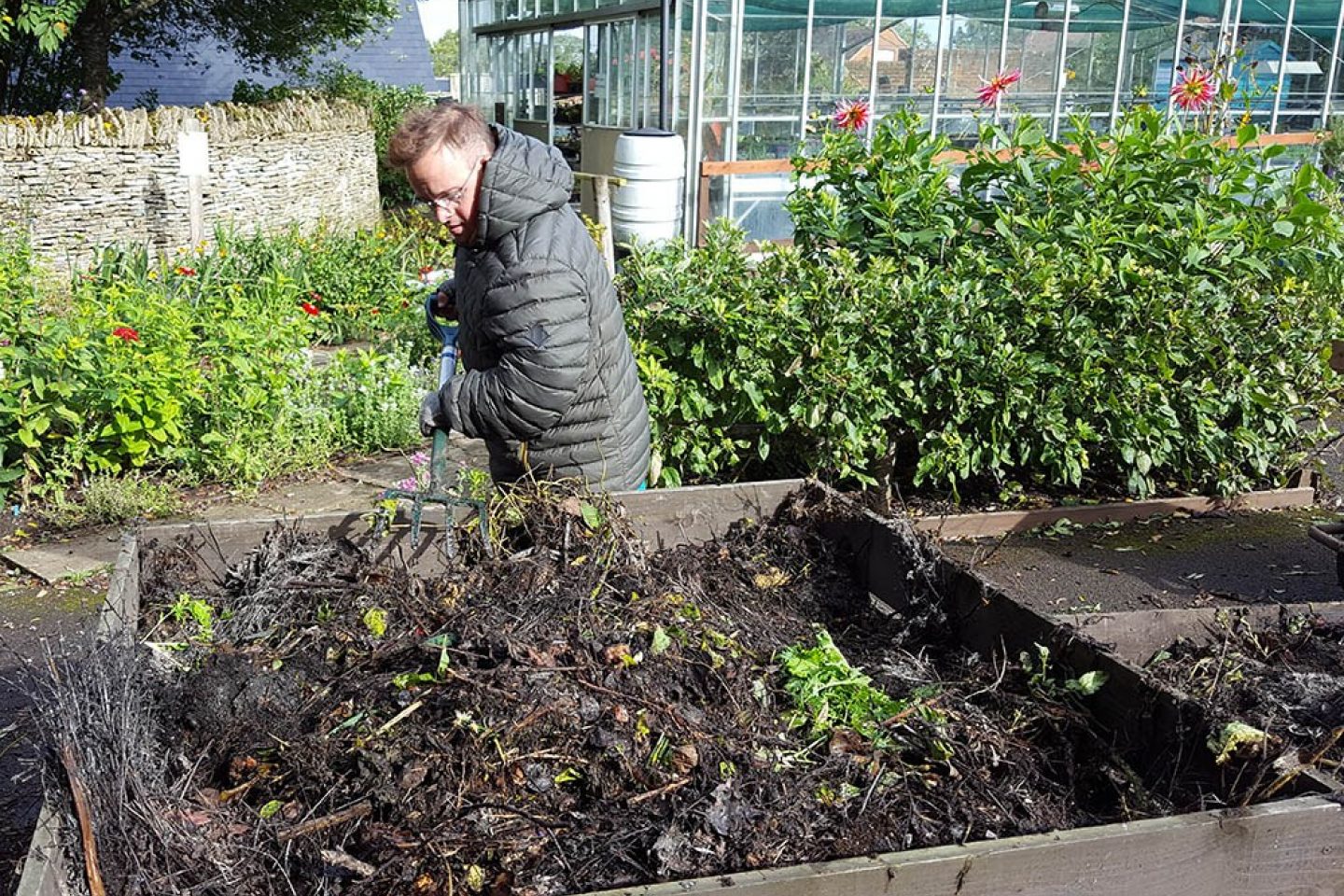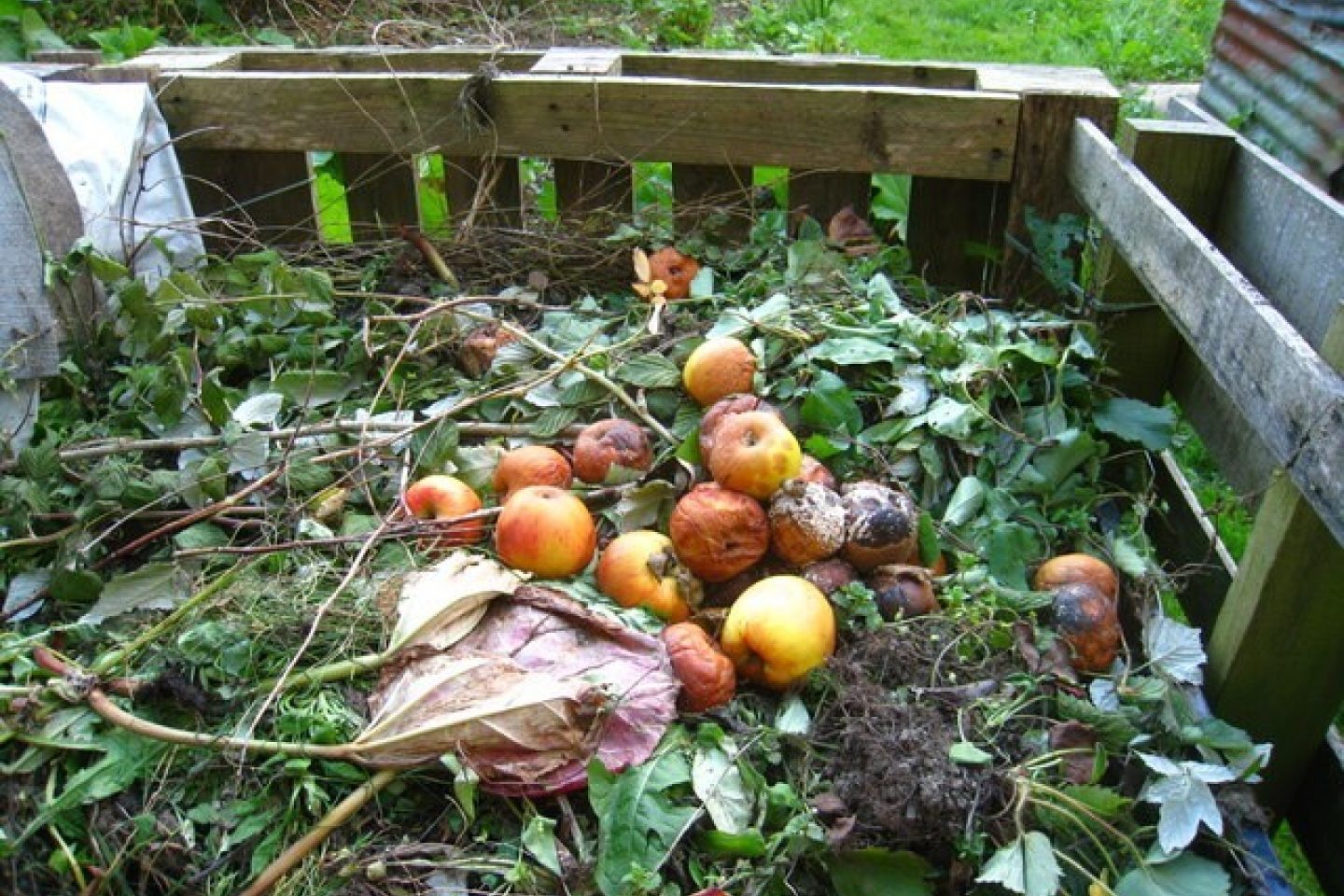Helpful information
Timing: All year around
Where to do it: Outdoors
Garden space: Small garden, large garden

Timing: All year around
Where to do it: Outdoors
Garden space: Small garden, large garden
If you do not have outdoor space, you could make a small amount of compost indoors using an old plastic bottle. Read our article on how to make compost in a bottle.
Essential items
Optional items

Over time, the soil in your garden loses the nutrients that plants need to grow. One way to restore these nutrients is to use feeds and fertilisers. Another way is to add garden compost to your soil.
Making your own garden compost is great for many reasons. It is good for the environment. It allows you to reuse waste plant and food items. It is free! (you can, of course, buy bags of ready-made compost). It increases the health and vitality of plants.
Compost can be made in any sort of garden, so long as you have some space and somewhere to create your compost pile.

Most gardens, unless they are very small, can fit a compost pile in.
When choosing a site for your compost, you should:
If your compost bin is on a hard surface, add garden soil to it along with the waste materials. This will help make sure the necessary microorganisms get into the compost.

The best compost bin won’t be the same for everyone. It should suit your garden size, the type of food or plant material you have to fill it and your physical ability.
These are some of our recommendations:
When you turn your compost pile (see below), there is a chance that it will release bioaerosols. These can particularly affect people with a chest condition, like bronchitis or asthma. Wear a mask while turning your compost or choose a tumbling style composter.

There is a science behind creating good garden compost. There needs to be a balance between ‘brown’ materials that are full of carbon and ‘green’ materials that are full of nitrogen.
Brown materials are often woody (e.g. twigs). Green materials are usually soft and green (e.g. grass clippings).
Ideally, you would have more brown material than green material on your compost pile. Try and aim for at least an equal balance between the two. If you find your compost is too wet / slimy add more brown material (e.g. cardboard) and if it’s too dry add water.
Composting is a waiting game. Use what waste material you have available and check how it is looking from time to time. Remember - it doesn’t happen overnight!
Compost materials to add:
Brown material (carbon rich)
Green material (nitrogen rich)
There are some materials you should not add to your compost pile. These may attract pests or contain harmful parasites. Don’t add:
Getting waste ready for the compost bin
Small pieces of plant material break down into compost quicker than big pieces. Use secateurs to cut thin sticks and woody prunings (if they are a little finger width or less). Leaf shredders are available, although they are expensive. You could also use a lawnmower to shred leaves. Simply run it over leaves on your lawn.

You need three things for your waste materials to become compost: heat, moisture and time.
To help your compost develop, turn it with a fork or spade from time to time (or use the handle if you have a tumbler style bin).
Your compost is ready to use when it is dark and crumbly. It should have the texture, smell and look of garden soil and not rotting vegetation or dry wood.
It can take a year or more for your garden compost to be ready. If you are lucky, it may be quicker than this.
To speed up the composting process, you can buy compost maker/accelerator. This breaks down materials so you get useable compost faster.

You can use your compost in different ways around your garden:
Compost can take longer than you think to be ready, especially when you first start out. Be patient - it should get there in the end!